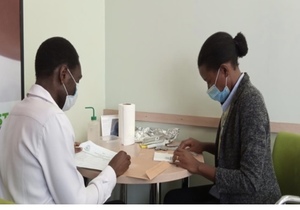USP's Technology Review report on the PAD is now published.
Executive Summary
The paper analytical device (PAD) was developed as a cost-effective tool for field screening of a wide variety of pharmaceutical dosage forms in low-resource settings. The PAD is produced by wax printing on Ahlstrom 319 paper, which is a fast chromatography paper that creates separate reaction lanes and contains trace quantities of chemical reagents to create color changes in response to different pharmaceutical articles. Due to the COVID-19 pandemic, there has been continued upsurge of substandard and falsified (SF) medical products, especially those that claimed to be a possible treatment for the disease (e.g., azithromycin, chloroquine, and hydroxychloroquine), and which the PAD can be used to screen the products for quality. With the help of appropriate analytical techniques and methodologies, a preliminary laboratory study was conducted on all the samples used in the performance validation of the PAD to ascertain the quality status of each sample prior to the validation study on the PAD. The validation study was performed on the PAD by three different scientists using three different brands each of seven finished dosage forms (FDFs), their respective active pharmaceutical ingredients (APIs), SF formulations, and selected fillers (pharmaceuticals excipients). Upon evaluation of all data generated by the three scientists at the end of the validation study, the PAD was determined to be effective in identifying the active ingredients in all the samples collected for evaluation. The technology was also able to detect fillers such as corn starch present in some of the FDFs and formulations labeled to contain them. Results of the laboratory identification tests performed were consistent with those obtained with PAD by all three scientists. All SF formulations were prepared as per the study protocol, and all falsified formulations were correctly identified as falsified by the PAD. However, the PAD was incapable of distinguishing between substandard or degraded formulations (even those with 50% APIs) and good quality products and formulations and their respective pure APIs, making it impossible for the technology to be used to screen substandard products. Only falsified products were able to be identified correctly.

During field evaluation, the PAD was found to be easy to use, with little skill required for sample preparation and interpretation of results and new users only needed minor training. PAD was able to provide results within 5 minutes and requiring only a small working space. Also, no chemicals or reagents are required for sample preparation and development. However, the PAD is not able to sustain the color result for along period, requiring users to read the result outcome immediately.